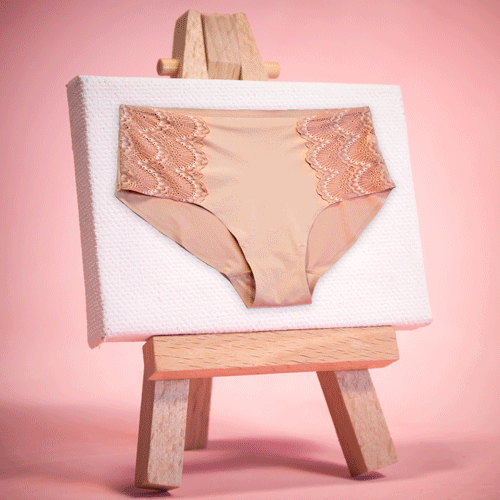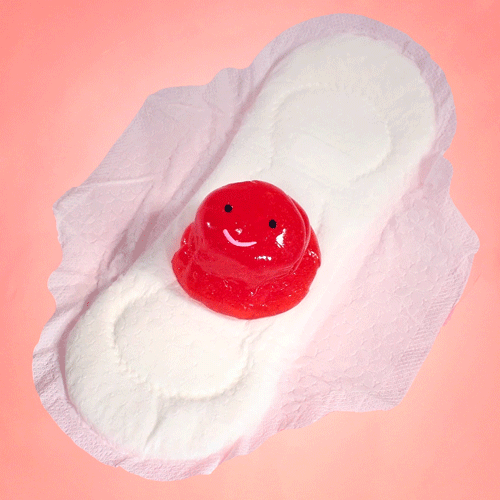Periods
Video Content : Iesha Learning
Menstruation.
What is it?
Menstruation, menses, or periods is a normal part of the female reproductive cycle. You may have heard that a lady is sick or cannot enter a temple or a kitchen as she is impure due to the fact that she is having her periods. This is a myth. Periods do not make a person impure or abnormal. A woman's menstrual cycle is an indication that her body is working steadily and well. Many women have stomach cramps, loose stools and issues such as irritability while they are on their periods yet it isn't equivalent to being sick or abnormal.
In most women, an ovary discharges one egg or ovum each menstrual cycle (the time between two successive periods). Likewise, amid each cycle the womb (uterus) sets itself up to get a treated egg by thickening the covering lining of its walls. In the event that fertilization has occurred (sperm meeting ovum), at that point the thickened coating is required to sustain the developing child. In the event that it has not occurred, at that point there is no further need of the covering. Along these lines, the body sheds off the covering which turns out through the vagina as bits of lining, blood, clots and mucous. This normally takes around 2-8 days. Menstruation is controlled by the hormonal framework, which in turn may influence vitality levels and states of mind. That is the reason many women encounter state of experience mood changes, pain and tiredness.
Not all menstruating people are women, however, and not all women menstruate. Younger girls do not menstruate until they hit sexual maturity between the ages of 10 to 15. Once women start growing older, their reproductive period starts coming to an end. Once they reach the end of their reproductive age, they stop menstruating and this is called menopause. Not all women menstruate. In the case of transgender women, their genitalia is of a male, thus they do not menstruate. In the same way, not all people who menstruate are women, as transgender men with female genitilia still menstruate.
Stay Healthy
Sanitary Napkins, Towels or Pads
Pads might be made of various materials. The ones that are accessible in the market are of a thin cotton cushion encased in a manufactured material. They absorb the period blood and keep it relatively odorless. They are curved pads with adhesive wings and the bottom of the pads have adhesive strips. Once you remove the strip, you can attach the pad to the inside of your underwear. Some pads accompany a thin belt or garter, in which case the closures of the napkin are kept set up by the belt. Sterile napkins may be expensive for some, or cause too much sensitivity, thus you can use cotton, fabric and dressing to make your own pad. It is important to change pads at regular intervals for hygiene.
Tampons
Tampons are cylindrical and absorbent and are intended to be inserted into the vaginal passage to assimilate the menstrual blood. They are very advantageous and simple to wear once you get into the habit. To use a tampon, you should unravel the string attached at the bottom and use clean fingers to flare the bottom of the tampon a little. Taking a squatting position makes insertion simpler. Put the tampon at the entrance of your vagina and slide it inside into a position that is comfortable. Relax and continue to insert until your finger has passed the vaginal muscle. You should push it as far as needed until there is no feeling of discomfort. If a tampon is not inserted deep enough, it may cause pain and irritation. Do not be afraid that the tampon will get lost or stuck inside you- your vagina is not capable of that. The string of the tampon can be used to remove it every 4-6 hours. You do not have to remove the tampon while peeing or pooping, just push the string to one side so it does not get wet. It is important to remove the tampon after a period of 6 hours, otherwise it can be very unhygienic and can cause Toxic Shock Syndrome. Using a tampon does not make you impure, and has no correlation to "virginity", etc.
Menstrual Cups
A menstrual cup is a hygiene product that is during menstruation, inserted into the vagina. It prevents the blood from the uterine lining and menstrual fluids from leaking onto the clothes. Menstrual cups are shaped like a bell with a stem and are usually made of flexible silicone. The stem is used for inserting and removing. The bell-shaped cup seals just below the cervix against the vaginal wall. The cup should be removed, emptied, rinsed, and reinserted every 4–12 hours (depending on the amount of flow). After each period, the cup can be boiled for at least 5 minutes and stored for use the next month.
Cups collect menstrual fluid rather than absorbing it, unlike tampons and pads. One cup is reusable for up to five years or more. The menstrual cup’s use greatly decreases the amount of environmental waste generated from menstrual cycles and hence is reusable.
The use of menstrual cups relative to other forms of menstrual hygiene is considered a safe option. Though the initial cost is higher, their long-term cost is lower than that of disposable tampons or pads. Menstrual cups are practical and eco-friendly and hence are promoted as more than pads and tampons.


